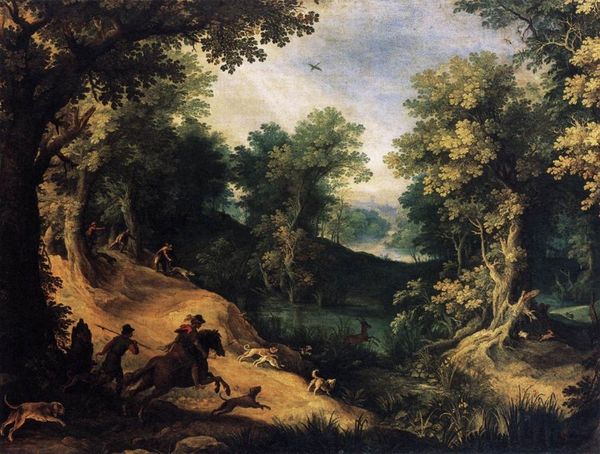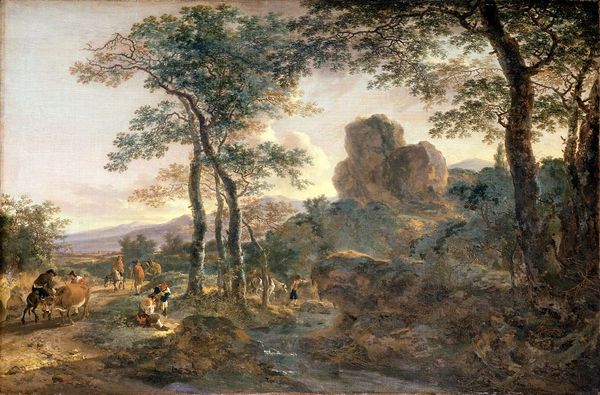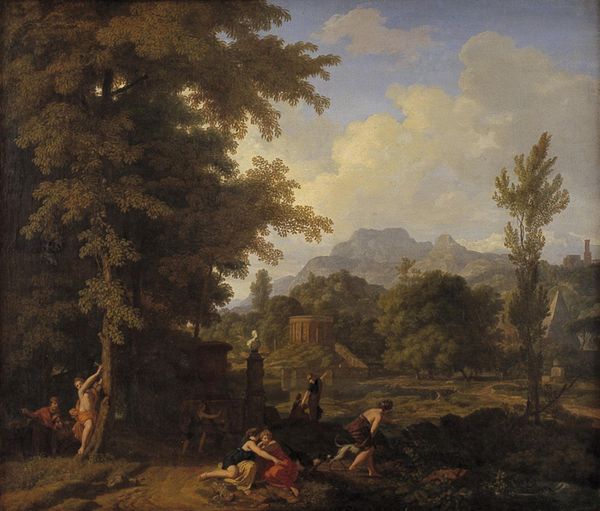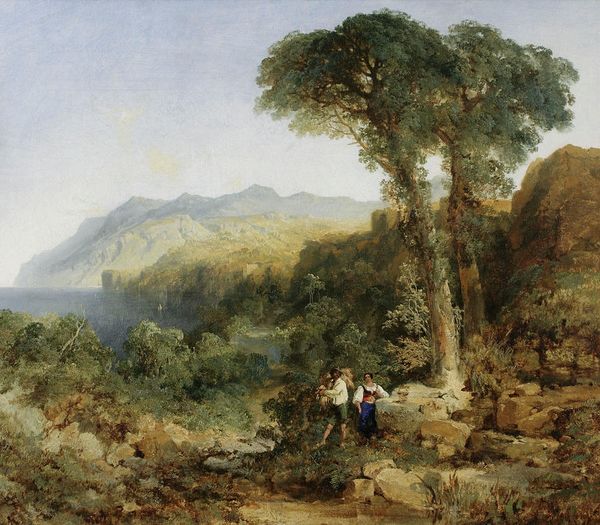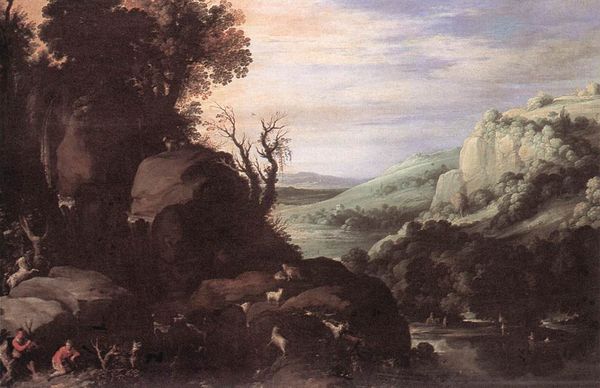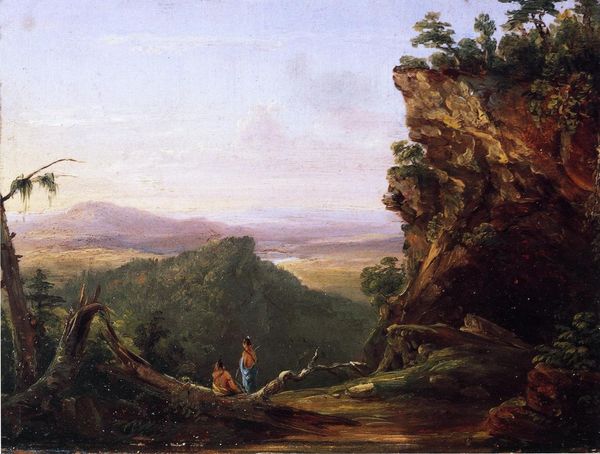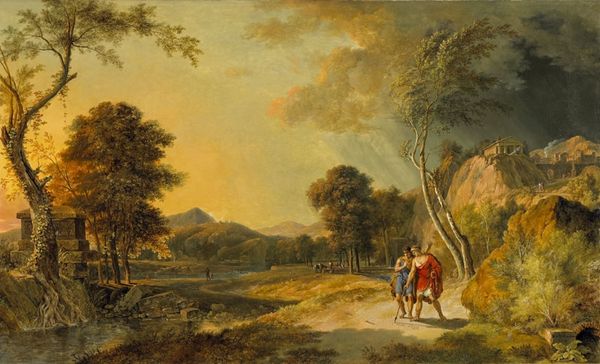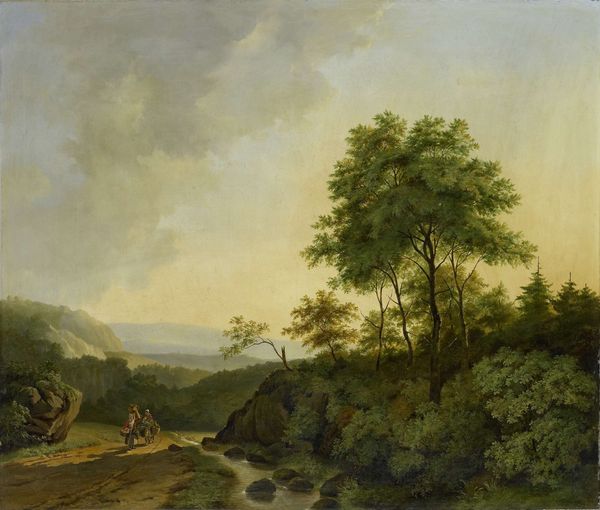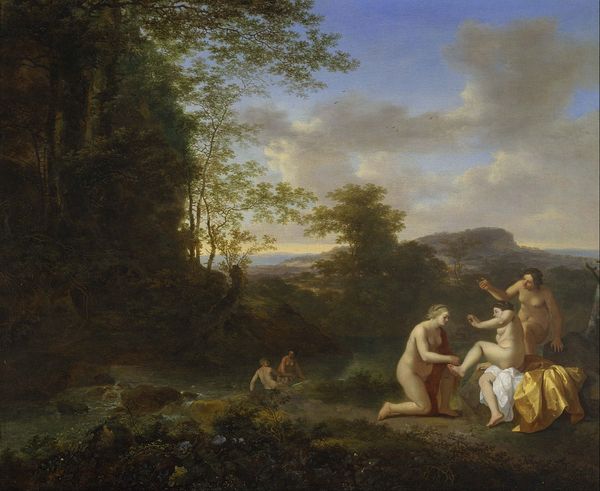
painting, oil-paint
#
tree
#
sky
#
painting
#
oil-paint
#
landscape
#
figuration
#
oil painting
#
romanticism
#
realism
Copyright: Public domain
Claude-Joseph Vernet painted "Shepherd in the Alps" during a time when Europe’s elite classes romanticized rural life, often glossing over the realities of peasant existence. Here, Vernet presents an idealized vision of pastoral life; the shepherd and shepherdess appear as figures of leisure, enjoying the shade rather than engaging in strenuous labor. This representation speaks to the social hierarchy of the time, where the wealthy could afford to imagine a picturesque countryside removed from their own economic dependencies. Vernet’s own position as an artist favored by the aristocracy allowed him to create images that catered to their desires for escapism and aesthetic pleasure. Yet, this romanticized view also obscures the hard work and social inequities inherent in agricultural life, reflecting a selective lens through which the upper classes viewed the world. The painting serves as a reminder of how art can both reflect and shape societal perceptions, often reinforcing existing power structures while offering a momentary escape into an idealized past.
Comments
No comments
Be the first to comment and join the conversation on the ultimate creative platform.
